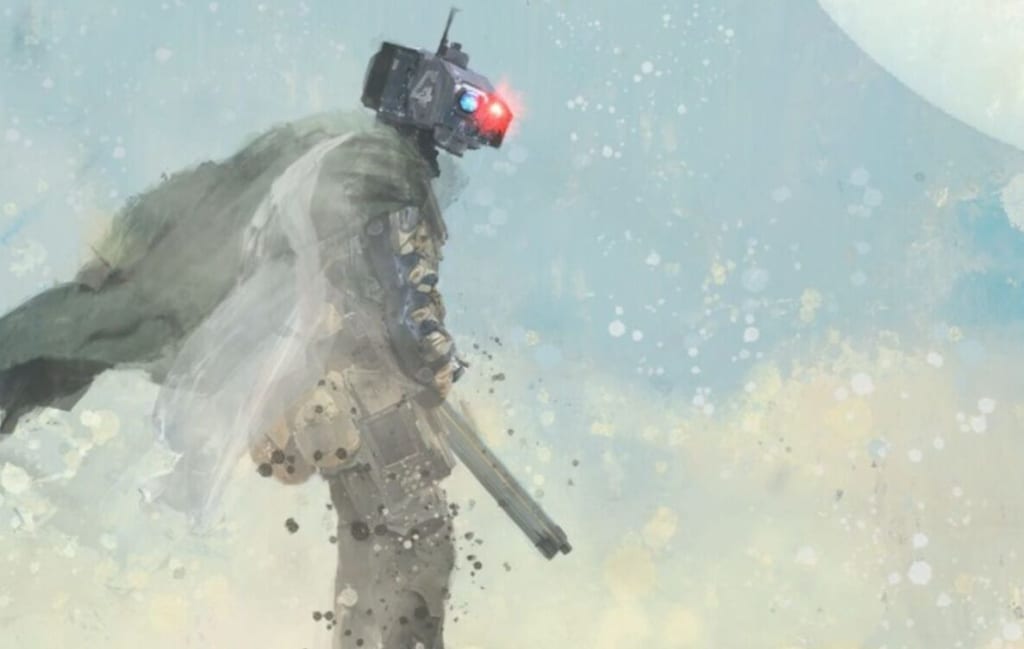Carrier Commander 2 Review
MicroProse is back in 2019 with a host of new strategy and simulation-lite games

MicroProse is back in 2019 with a host of new strategy and simulation-lite games. Highfleet was a solid return to form for the dormant publisher and showed exactly the required potential for creative game design in the current franchise and license-dominated strategy market. Geometa's Carrier Command 2 can bring back fond memories of the original and MicroProse's promise to return. Can this start a revolution?
Carrier Command 2 lets you play as a crew member of a sci-fi assault ship. You plan your routes, launch drones, set up supply lines, capture islands, and eventually face off against another carrier. Although the game has no narrative, it does not add or subtract from the experience. It only serves to set the scene for the abstracted sci fi setting.
MicroProse continues to introduce a new strategy sub-genre, Carrier Command 2, to the market. This is the diegetic strategy games where players interact with in-game UI elements to simulate the bridge. This approach creates a more immersive experience than games that use abstract or functional UI. It feels fresh and new.
Carrier Command 2 has a mixed presentation in terms of wider presentation. The game's graphics are reminiscent of the minimalist pixel art style used in the original games. However, it isn't spectacular and contains a lot of jank, especially with water. Carrier Command 2 is better from an audio design perspective. It has a satisfying hum of jet engines, whirring propeller blades and decent, though repetitive, setting-appropriate sound effects.
Carrier Command 2 is one of the most confusing and unfairly sided games I have ever seen. The game's concept is amazing, ambitious and innovative. It focuses on team-based strategic decisions-making and coordinated tactical actions, and also includes a logistics system. This game is unlike any other.
From a mechanics standpoint, there is also plenty of content on offer, such as the procedurally-generated map alongside the excellent variety and depth to drone command and customization. The immersive UI makes it possible to play light roles, especially in multiplayer. It is easy to appreciate the premise because it sets the scene and doesn't distract from the action with too much exposition.
The main problems arise from Carrier Command's modes implementation, especially single-player drone controls and frustratingly confusing some of its systems. Developers make it clear that the game is meant to be played in competitive multiplayer and cooperative play. However, such a strong focus on multiplayer and a lack of refinement for single-player raises serious concerns about the inclusion of it and makes the whole experience less enjoyable.
Single-player has its biggest problem: the game's slow pace, confusing information presentation, and frustrating controls. There are two main modes for single-player: campaign and custom skirmish. Only the latter allows the player to customize the game's scenario parameters. The campaign allows the player to control as many of the 64 islands and eliminate the AI-controlled enemy carrier.
Poor pacing is evident immediately with the slow ship and drone speeds (aerial drones are not affected by this issue) as well as the absurd distances between islands. These features aren't necessarily bad, but Carrier Command 2 leads to massive downtime, where players will be waiting for the next skirmish or flashpoint, making it difficult to imagine playing through a huge campaign. Combat is engaging and fun with lots of tension. Players can only see their ship's instruments or drone cameras from the bridge, but these short moments of entertainment do not compensate for the boredom that occurs during downtime.
Carrier Command 2's single player mode has a problem. It lacks quality-of-life support and other features that make it enjoyable. A complete absence of a time dilation mechanism is the most obvious exclusion. This is an unacceptable offense for a single player experience, especially when MicroProse's recent HighFleet (a diegetic realtime strategy game with a similar structure) includes it. Single-player also lacks any automated systems that can make ship command more efficient or compensate for a shortage of crew members.
In strategy games, there's always a chance that stylized UI could get in the way. This is especially true for Carrier Command 2, where it seriously hampers single-player experiences. Players will need to move around the ship to reach various systems. This is inefficient and tedious and distracts from the fun decision-making. It is very apparent that there are no automated systems, or the ability for AI crewmembers (or even the possibility of delegating tasks) -- Carrier Command 2 could learn a lot by Star Trek: Bridge Commander.
Control tedium only becomes worse when the player is not given all the necessary information, such as the inadequate tutorial or unclear manual. Many will be confused and frustrated by the tutorial's insufficient detail and lack of clarity. It also leaves out crucial components such as setting supply lines. The developers clearly knew the tutorial was poor quality and included a step to allow players to open it. This manual has a lot of confusing or unhelpful information.
Multiplayer is the best way to enjoy the game. Single-player issues can disappear completely or become more frustrating than they are. Multiplayer makes it almost impossible to experience the slow pace and lack of automation. Players can help each other and take different roles on the bridge. Multiplayer multiplayer offers a lot more strategic and tactical possibilities than single-player. Players can form up to four teams with their own carriers and engage in intense and chaotic ship-to–ship battles.
Unfortunately, multiplayer has its limitations and flaws. It's easier to control the carrier mechanically with a group, but controlling drones, which is a large part of the game is, can be as confusing and clunky in multiplayer as single-player. This could lead to frustration and even ruin the fun.
There is an unspoken soft ceiling to controlling a carrier. Players must have at least four crew members in order to reduce the amount of work involved. Although commanding alone is better than two or three, it is not enough to cover all vital system and reduce stress. Six is the ideal number, with the possibility of having up to 16 players on any server.
Carrier Command 2 is also lacking in community building tools and does not integrate critical multiplayer functionality. It does not have a matchmaking system or a public lobby system. Instead, the game uses friend invites, direct IP address connections, and a public invite code. It may be difficult to get into multiplayer if you are not already part of a committed and interested community.
Carrier Command 2 has yet another missed opportunity when it comes time to switch things up. Each team will receive the exact same carrier with the same weapons, and the same controls. This can lead to repetitive gameplay, but this is a minor issue considering all of the issues in the game.
Carrier Command 2 offers a surprising number of options, which is a great feature. Although I experienced some frame drops while exiting a station from either the drone control screen, or the viewing scope, it did not affect my overall experience.
Carrier Command 2's spec requirements are extremely generous. Even players with older systems should be able run the game with no problems. Apart from the fact that the ship's hull was being re-routed by airlifted ground vehicles, I didn't experience any crashes or major bugs. It's possible that some drone orders may have been unresponsive or clunky because drone controls are so inefficient and clunky.
Carrier Command 2 is a unique game. It has ambition and its concepts are innovative, exciting, and potentially revolutionary because it focuses on team-based strategies. Its systems are unrefined and outdated in some places, which is a major hindrance to its lofty goals.
It's more like an interactive simulator in a museum, but ported to a PC. Carrier Command 2 is difficult to recommend to anyone, unless they are able to organize teams of 4-8 people. The single-player just isn't sufficient to handle the many frustrations.
About the Creator
Enjoyed the story? Support the Creator.
Subscribe for free to receive all their stories in your feed. You could also pledge your support or give them a one-off tip, letting them know you appreciate their work.





Comments
There are no comments for this story
Be the first to respond and start the conversation.